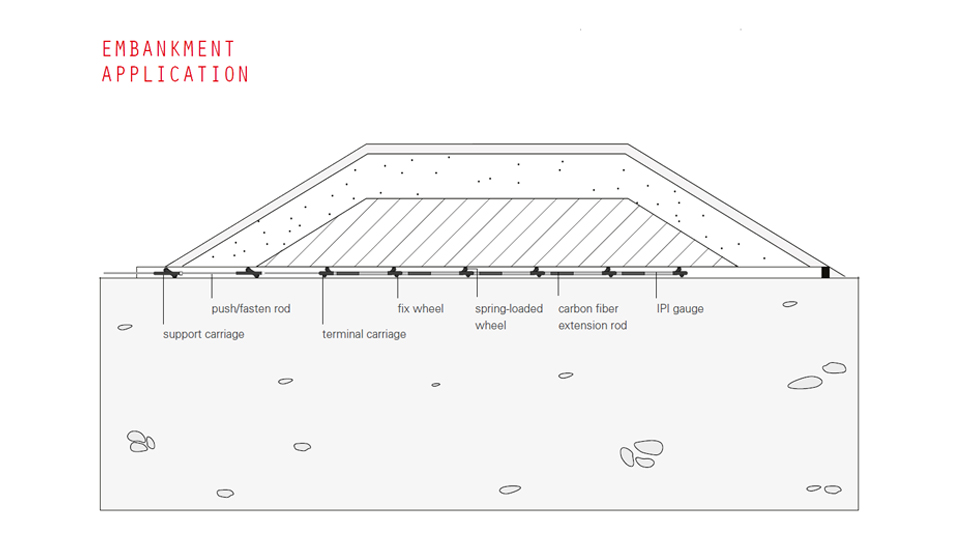Overview
Horizontal inclinometer is an eficient monitoring instrument used to measure horizontal profiles of differential settelement or heave. It can be used in many geotechnical applications such as measurement of settelement and heave under the dams, embankments, roadways, landfills, storage tanks and even ahead of tunnel face excavation. The concept is similar to vertical inclinometer except that the adapted combination of casing and proble allows it to be used in the horizontal direction.
Application
The main applications of hertical inclinometers in geotechnical monitoring are, among others, high resolution measurement of settlement and heave:
- Under the dams,
- under the embankments and landfills
- under the roadways
- under storage tanks
- Along the horitontal direction ahead of the tunnel excavation face
Installation and operation
The horizontal inclinometer is very similar to the portable vertical inclinometer with a casing installed horizontally rather than vertically and proble allowing to measure settelement and heave. Thus, it consists of a guide casing embedded in a horizontal trench or borehole in the ground, a portable bi-axial wheeled probe, a graduated control cable, pull cable, and the readout data acquisition system.
The casing is installed horizontally with one set of grooves aligned vertically. The probe travels along the casing using the cable, measures the deflection of the casing and transfers the data to the readout unit. If the far end of the casing is not accessible, a dead-end pulley and cable-return pipe are installed with the casing.
For the measurements, the inclinometer portable probe is placed in the casing and readings are made from one end to the other end at intervals of 50 cm. The intervals are controlled my metallic marks on the cable passing through a notch in the cable gate. At each reading, the tilt on both axes (deformation) are measured and acquired by the data acquisition system. Once the probe reaches the end of the casting, the probe is recersed and drawing a second time from end-to-end. The two readings eliminate the errors and provide a full horizontal profile of the casing. Results are often presented in terms differential sellettement/heave profiles.
The other type of vertical inclinometers is the in-place horizontal inclinometer. It consists of one or more sensors positioned on the zone of suspected deformation and connected to a data logger. This type of inclinometers is rarely used in common geotechnical practice and is mainly useful for very particular cases where a continuous monitoring is required for construction or safety purposes.

Advantages and Limitations
Advantages:
- An efficient way to monitor the settelement and heave
- Providing a full profile of differential settelement and heave
- The installation is relatively simple
- The system is usually roboust, stable and reliable in long term
- Accurate and precise measurement with proven reliability
Limitations:
- Measurements will be discontinued in case of shearing of the casing due to large settelement or heave.
